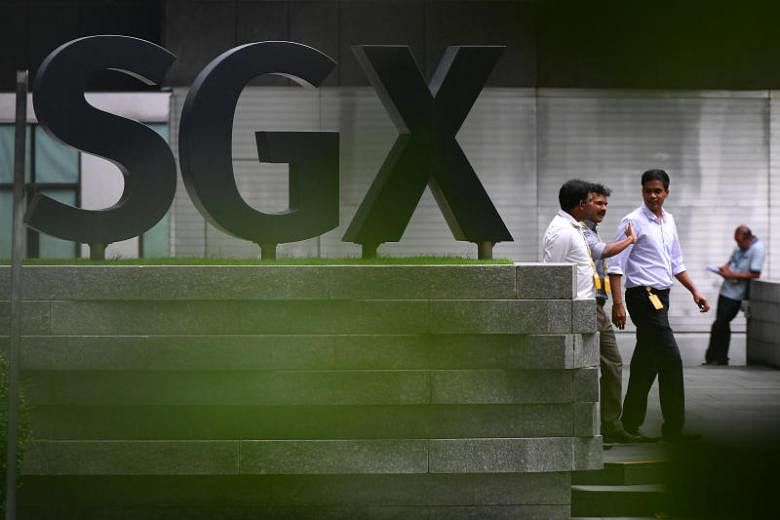SINGAPORE - The Singapore Exchange (SGX) has proposed changes to its securities settlement and clearing processes, with a public consultation that opened after the end of trading on Wednesday (Nov 29).
These changes, the bourse operator said, will reduce systemic risk in the stock market here and bring Singapore in line with newer international standards.
It also rolled out a plan to let brokers offer more personalised services, by giving investors the option to reveal certain holdings in their SGX Central Depository (CDP) direct accounts to their brokers.
The suggested tweaks include reducing time taken for traders to get their hands on their securities, having securities and money change hands at the same time without a delay, and enhancing settlement processes.
For example, Singapore-dollar CDP cash payments and receipts would be carried out through the Monetary Authority of Singapore (MAS) system rather than commercial banks.
The CDP will also discontinue its practice of creating securities overdrafts when deliveries fail - a problem that affects, on average, under 0.1 per cent of daily traded value.
It will instead settle in cash any unresolved failed deliveries six business days after the intended settlement date.
Loh Boon Chye, chief executive of the SGX, said in a statement: "The changes proposed today are aimed at reducing systemic risks and aligning the clearing and settlement processes of the Singapore market with global practices. "They will also strengthen Singapore's position as an international financial centre."
One key change is cutting the securities settlement cycle to two days after the transaction, down from the three-day wait now - a move that was previously put forward jointly by the MAS and the SGX in 2014.
The reduced time - already the standard in the European Union, as well as at the Stock Exchange of Hong Kong and the New York Stock Exchange - was meant to have kicked in by 2016, but Nico Torchetti, SGX senior vice-president and head of market services, told a media briefing that the industry could not get ready in time.
The SGX is in the midst of an overhaul of its post-trade processes, which entails bumping bourse members off its central operating system and onto their own.
Mr Torchetti said: "The overall changes in our framework are basically related to our post-trade modernisation project. Now we have done the first phase. This is part of the second phase. "So all our framework changes are basically part of that programme. This programme, especially Phase 1, took longer than expected in terms of market readiness.
"So now that we can implement it, we will."
The bourse operator's position and rationale, he added, are "still the same".
"But market readiness was not there earlier - therefore we are implementing it now that we do believe the market is ready."
On the difficulty of getting the industry to make the switch, Mr Torchetti said: "We are currently, if you look at the region, one of the first ones that has embarked on this.
"If you look at Australia, it's going through the same process right now. Hong Kong has started the same process. Indonesia is looking at a similar revamp. So there's a certain technology cycle which is the base for developments in the market. Now we have embarked on this early in 2014, where others are now following, so you will see similar developments in the region as they start their projects."
As for the creation of the broker-linked balance option for investors, Mr Torchetti said that this planned service "is really anchored in the fact that we, as a CSD (central securities depository), do hold direct accounts for retail investors".
"If you look internationally, there are not many exchanges that actually do that - we are one of the few," he added.
The current system does not give brokers visibility over direct accounts, which are mostly used by retail investors.
The optional broker-linked balance service would let an investor tag a specific broker to specific holdings, giving the broker full transparency over and joint control of the assets.
Mr Torchetti said: "These changes can be summarised into two things: overall, the risk reduction, in particular with today's settlement process, as well as the alignment to international standards and best practices, which really is trying to keep Singapore as a marketplace competitive compared with international peers."
SGX aims to have these proposed changes kick in by the second half of 2018.
The public consultation will be open until Jan 15, 2018.


